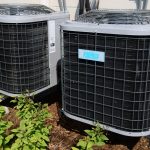Winter Wise: Recommended Thermostat Settings in the Winter
Did you know that adjusting your thermostat by just 7 degrees for 8 hours a day can lower your energy bill by up to 10% a year?
That’s a huge saving. Especially if you work outside the home during the day. You won’t even feel that temperature change.
Read on to learn the recommended thermostat settings for the maximum cost savings this winter.
Best Temperature to Set Thermostat in Winter
The best indoor temperature is between 60-70 degrees Fahrenheit during the daytime in the cooler months.
In winter, there’s no need for your home to be warm enough to be in shorts and short-sleeves. You may find that setting your thermostat to within this range just requires you to dress for the weather. Wearing winter apparel is an easy and free way to save money on your energy bill.
A warm sweater, slippers, and pants when you are home will keep you warm. Don’t forget to keep throw blankets on your couches and beds to make you feel warm and cozy as you save energy. Running a humidifier can help make your home feel warmer than it really is.
While you sleep, you probably won’t mind if the house is cool. You have thick duvet covers, quilts, and blankets to keep you warm. Plus, your body’s temperature naturally lowers when you go to sleep.
Set the temperature to drop about an hour before you go to bed so that the house starts to cool down.
If you have a programmable thermostat, set the temperature to go up about two hours before you wake up. That way the floors won’t be icy when you get up.
Adjust to the Recommended Thermostat Settings
If you are used to keeping your home at the ideal temperature for your preference, it may be difficult to lower your thermostat to the recommended thermostat settings.
That’s OK. You can make the change gradually so that you hardly notice the difference.
Start by lowering the temperature by one degree each week. This one-degree change over eight hours a day equals a 1% energy saving. Not bad!
Keep lowering the thermostat by one degree until you reach the ideal temperature range. With a slow, gradual change, you likely won’t find it too difficult to start saving energy.
There are other things you can do to keep heat in and conserve energy. Start by closing doors to rooms you aren’t using. You can close those vents as well.
Before winter hits, go around and seal any cracks in the door jambs and around the windows.
Get your furnace inspected annually. The last thing you want is to wake up to no heat on the coldest day of the year.
Final Thoughts on Heating Temperatures in Winter
There you go! Now you know the recommended thermostat settings for winter to save you money and energy.
Remember, if you are going away for a day, a weekend or longer, set your thermostat down to 55-60 degrees. There’s no need to heat an empty home.
Ready for your annual furnace inspection? Contact us today to schedule an appointment.





